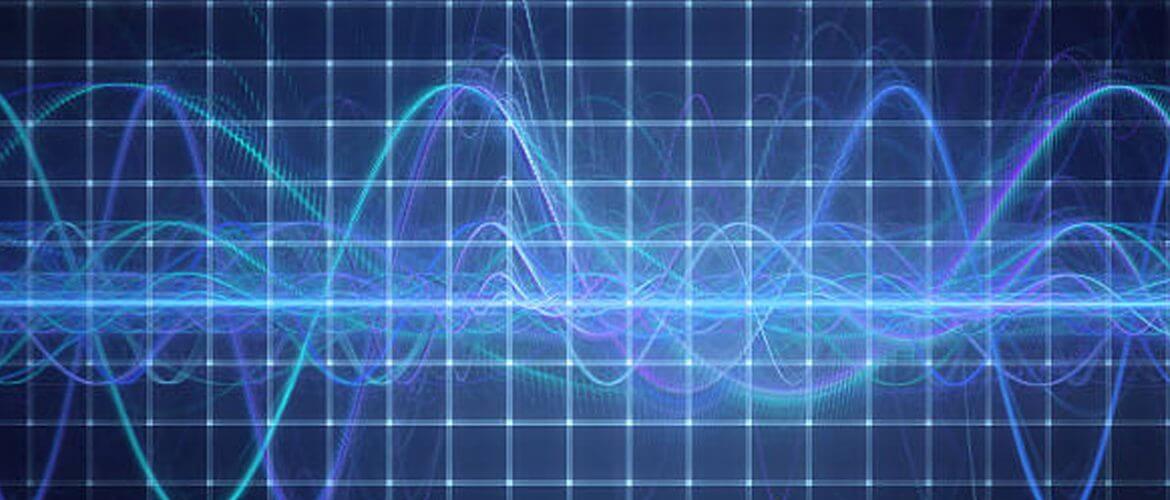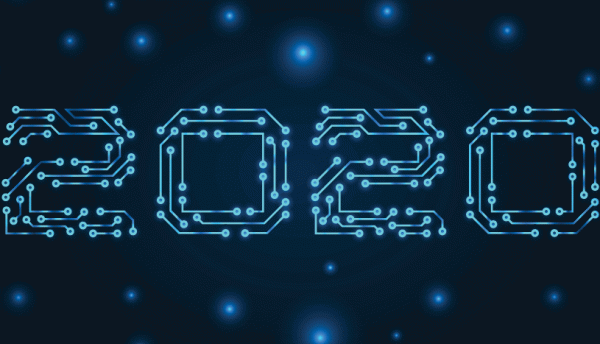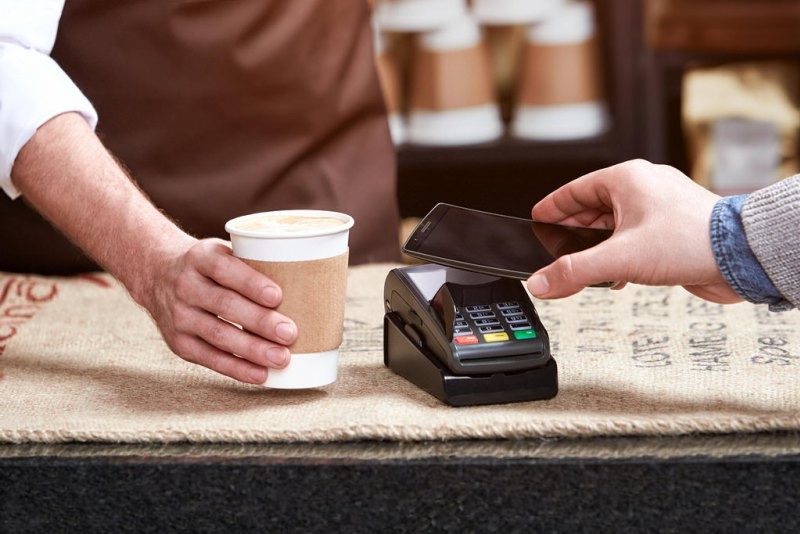What Is The Metaverse: Where We Are & Where We’re Headed
Check out my initial blog on the metaverse here:
https://blog.alleninteractions.com/what-is-the-metaverse-where-we-are-and-where-were-headed
Written by Brooks Canavesi on . Posted in Blog, Technology trends
Check out my initial blog on the metaverse here:
https://blog.alleninteractions.com/what-is-the-metaverse-where-we-are-and-where-were-headed

Written by Brooks Canavesi on . Posted in Technology trends
All around the world, carriers are rolling out the latest generation of cellular network technology, 5G, which promises much higher data rates, lower latency, and increased capacity. In the Ericsson Mobility Report, the multinational networking and telecommunications company predicts that 5G networks could carry 35 percent of mobile data traffic globally by 2024.
However, not everyone is looking forward to the benefits of 5G networks. In fact, some worry that the latest generation of cellular network technology could have a profoundly negative effect on the health of all people who become exposed to it. Let’s explore the reasoning behind these fears to find the truth about 5G safety.
A decade has passed since the first commercial deployment of the fourth generation of broadband cellular network technology, better known as 4G. Since then, the number of connected devices has exploded, and the Internet of Things has matured beyond buzzword status into a fact of life in developed and developing countries alike.
The current broadband cellular network technology is unable to satisfy the growing need for high-performance, low-latency cellular connections. 5G promises to enable billions of new connections with at least a tenfold improvement in network performance. It also promises network latency that doesn’t exceed a couple of milliseconds and a high-capacity, high-reliability architecture comprising of many small cells.
“5G will enable blossoming technologies that rely on connectivity to the internet to go widespread, from connected self-driving cars to smart plugs, lights, cameras, toothbrushes, thermostats, healthcare monitoring devices and more,” writes Ethan Siegel, a senior Forbes contributor and the author of science blog Starts With A Bang. “The Internet of Things is coming, and 5G is the technology that will take it mainstream.”
To deliver on its promises, 5G technology uses both the existing LTE frequency range (600 MHz to 6 GHz) and millimeter wave bands (24–86 GHz). Today, millimeter-wave bands, also called mmWave, are used mostly for satellite and point-to-point radio links. Some people are worried that prolonged exposure to higher doses of millimeter-wave bands could have negative biological effects because radiofrequency energy at these frequencies is absorbed superficially by the body, mostly by the skin.
There were even protests earlier this year in Wales and Switzerland, with thousands of protestors demonstrating against the rollout of the new technology. When opponents of 5G are asked why they believe the technology could be harmful, they often refer to the World Health Organization (WHO) and its classification of all radiofrequency radiation as possibly carcinogenic.
More recently, some 5G critics have been mentioning a toxicology report released in 2018 by the US Department of Health, which found that male rats exposed to high doses of radiofrequency radiation developed a type of cancerous tumors in the heart.
To add fuel to the fire, there are researchers like Joel M. Moskowitz, who is known for publicly voicing his concerns about the possible health risk of 5G. Moskowitz works on public health issues that include cell phone risk, tobacco control, and alcohol abuse at the faculty of the School of Public Health at the University of California, Berkeley, published an influential article in Scientific American, titled “We Have No Reason to Believe 5G Is Safe.”
Does this mean that 5G is really dangerous and that there is a valid reason for concern? To properly answer this important question, it’s necessary to start with a brief explanation of the science behind cellular communication.

At the heart of the fears surrounding the rollout of the latest generation of cellular network technology is something called radiofrequency radiation (RFR), which is the radiation (the emission or transmission of energy in the form of waves or particles through space or through a material medium) produced by the transfer of energy by radio waves.
Even though RFR sounds scary and is often associated with nuclear radiation, the two types of radiation differ in one very important aspect: RFR is non-ionizing, just like all lower-energy radiation, which includes optical (visible) and infrared (heat) radiation.
Low-energy radiation is also called non-ionizing radiation because it doesn’t have enough energy to detach electrons from atoms or molecules and thus cause damage at the cellular level to biological organisms.
On the other hand, the radiation from x-rays is probably the most known form of ionizing radiation, and there’s a very good reason why doctors always try to minimize exposure to it as much as possible with lead shields and other radiation protection solutions.
Even though millimeter-wave bands have a much higher frequency than LTE bands, they are still very much in the non-ionizing part of the electromagnetic spectrum. Because RFR has such a low power, even prolonged exposure to it is nothing compared with the exposure to sunlight.
“To put it in context, the weakest visible light is more than 17,000 times more energetic than the highest-energy 5G photon possible. Were they consistent, anti-5G activists should be orders of magnitude more concerned about light bulbs than cellular phones. The fact that they aren’t is indicative of a gross misunderstanding,” writes David Robert Grimes, an Irish physicist, cancer researcher, and science writer.
What’s more, the power of 5G signals sharply decreases with distance. What would be classified as a high radiation dose when standing just a few inches away from the sour goes down by a factor of 10,000 about 33 feet from it. It’s estimated that a portable radio or boombox produces far more radiation of similar frequencies when held close to the body as one would receive from a 5G device carried in a pocket.
“The maximum radio frequency level that someone in the community could be exposed to from 5G (or any other signals in general community areas) is so small that no temperature rise has been observed to date,” says Professor Rodney Croft, an adviser to the International Commission on Non-Ionizing Radiation Protection (ICNIRP). In other words, 5G and earlier mobile technologies don’t produce any harmful heating effects.
According to one scientist who worked on the report that found that male rats exposed to high doses of radiofrequency radiation developed a type of cancerous tumors in the heart, “exposures used in the studies cannot be compared directly to the exposure that humans experience when using a cell phone,” and that goes even for heavy users. In fact, the same study found that rats exposed to the radiation lived longer than those in the control group.
The fact that the WHO classified all radiofrequency radiation (of which mobile signals are a part) as possibly carcinogenic doesn’t sound too scary when you learn that this category is used for agents, mixtures, and exposure circumstances for which there is limited evidence of carcinogenicity in humans, such as pickles. Alcoholic drinks and processed meat are in a higher category because the evidence is stronger.
“Using the term radiation is misleading because people think of nuclear weapons—they think of ionizing radiation that absolutely can cause damage. It can kill cells. It can cause DNA mutations,” says Dr. Steve Novella, an assistant professor of neurology at Yale and the editor of Science-Based Medicine. “There’s no known mechanism for most forms of non-ionizing radiation to even have a biological effect,” he says.
Instead of studying the potential negative impact of individual 5G devices, it might be more useful to take a step back and look at the effect mobile technology has had on people since the very beginning. Between 1992 and 2008, cell-phone usage has grown from virtually zero to 100 percent, but there has been no indication of the increase of cell-phone usage resulting in more cases of cancer.
Numerous studies have confirmed this, many of which focused on RF workers, who install the wireless communication towers that provide the necessary infrastructure for 5G and are exposed to very high doses of RFR on a daily basis.
A good example is the 13-country INTERPHONE study, which unequivocally concluded that there was no causal relationship between phone use and incidences of common brain tumors such as glioblastoma and meningioma after to measuring the impact of cell phone usage on the human body for decades in 13 countries. There are also several long-term studies that studied radar workers, and they all concluded that the exceptional levels of RFR to which they are subjected to do not show a hint of increased cancer incidence.
All these and many other studies paint a clear picture: no adverse health effects have been established as being caused by mobile phone use to this date, and there is no scientifically valid reason to believe that the rollout of 5G would change that.

Written by Brooks Canavesi on . Posted in Technology trends
The 4th industrial revolution is in full swing, and several emerging technologies are expected to profoundly impact nearly every industry in the coming year. To remain competitive, organizations must keep ahead of them, anticipating their arrival and understanding their impact to make good business decisions. Based loosely on the latest Gartner’s Hype Cycle for Emerging Technologies report, this article describes the top 3 emerging technologies to follow in 2020.
The fifth generation of cellular network technology is designed to support 1,000-fold gains in capacity to connect at least 100 billion devices and provide extremely low latency and much higher data rates than 4G.
Already, the largest telecommunication companies in the world are rolling out 5G in countries like the United States, South Korea, and China. In 2024, 5G networks are expected to cover up to 65 percent of the world’s population, enabling the Internet of Things to grow at an unprecedented rate and creating the opportunity for organizations to take advantage of faster internet speed and lower latency.
The first 5G-enabled smartphones have already been released, and virtually every smartphone manufacturer that matters will have at least a few models on sale in 2020.
In recent years, organizations across all sectors have been using a blend of artificial intelligence, machine learning, and automation tools to automate critical processes, improve efficiency, and reduce their operation expenses.
In 2020, automation is expected to reach a whole new level and include even processes that currently have been automated only partially. The new level of automation is referred to as hyper automation, and it incorporates smart and rapid automation driven by advanced analytics and machine learning.
Wipro, an Indian multinational corporation that provides information technology, consulting, and business process services, is at the forefront of hyper automation, offering a comprehensive end-to-end platform that has been designed and developed for new age telecom services.
Voice user interfaces rely on speech recognition to understand voice commands and make spoken human interaction with computers possible. They are expected to replace graphical user interfaces as the main form of user interface that allows users to interact with electronic devices.
In the past, voice control wasn’t possible because electronic devices lacked the necessary processing power to understand voice commands in real time. However, modern CPUs are capable of running advanced language processing algorithms that leverage machine learning and artificial intelligence to accurately understand tone, puns, and even sarcasm.
The proliferation of voice user interfaces is fueled by the growing popularity of smart devices and the need to control them without a costly touchscreen on an external input device.
From 5G connectivity to hyper automation to voice user interfaces, the year 2020 will see the arrival of several emerging technologies, all of which are expected to profoundly impact all forward-thinking organizations and create numerous growth opportunities. Those who manage to stay ahead of them can expect to enjoy a competitive advantage in the near future.

Written by Brooks Canavesi on . Posted in Blog, IoT, Mobile App Development, Technology trends, Uncategorized
You don’t have to be a fitness fanatic to monitor your heart rate. This useful piece of data is an important marker of cardiovascular health and monitoring how it changes over time can help you maintain a healthy lifestyle and stay within the recommended resting heart rate (RHR) range for adults, which ranges from 60 to 100 beats per minute. “A high RHR could be a sign of an increased risk of cardiac risk in some situations, as the more beats your heart has to take eventually takes a toll on its overall function,” says Dr. Jason Wasfy, director of quality and analytics at Harvard-affiliated Massachusetts General Hospital Heart Center. According to a 2013 study published in the journal Heart tracked the cardiovascular health of about 3,000 men, even a slightly higher RHR can double the risk of premature death. Fortunately, we live in the age of wearables, and it has never been easier to monitor heart rate in all real-life situations. Modern wearables make heart rate monitoring convenient, affordable, and sometimes even fun. But can relatively inexpensive gadgets from young tech companies produce reliable heart rate data? Let’s find out the answer.
Written by Brooks Canavesi on . Posted in Mobile App Development, Technology trends
The mobile revolution is well under way, with younger generations significantly preferring mobile devices over desktop computers. Mobile devices have changed how we interact with others, access information, entertain ourselves, and how we pay for things. According to the National Federation of Independent Business, mobile payments are predicted to be used by 56 percent of consumers by 2020, and the volume of mobile payments is expected to grow by 80 percent between 2015 and 2020. The widespread adoption of mobile payments by merchants and consumers has been enabled by the convergence of several important technological innovations, and mobile payments will continue changing as new technologies become widespread. This article describes five prominent mobile payment trends that are likely to share the future and transform how companies conduct businesses with their customers.